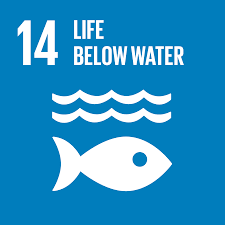Seaweed Farming: History, Benefits, and Market Forecast
- taylorwcomms
- Mar 26
- 5 min read
As the global population grows, the need for food surges, stressing our oceans and aquatic resources. Sustainable seaweed farming has become a vital solution, providing a reliable food source while positively impacting marine ecosystems.
In this article, we explore the innovative methods currently transforming sustainable seaweed cultivation and their effects on both the aquaculture industry and the environment.
History of Seaweed Farming
The Importance of Sustainable Seaweed Farming
Seaweed is one of the fastest-growing plants on Earth, in the fastest growing food production sector: aquaculture. It absorbs carbon dioxide and releases oxygen, contributing to a healthier atmosphere. Seaweed has numerous applications, spanning food, cosmetics, biofuels, and fertilizers. Sustainable seaweed farming is gaining recognition due to its low environmental impact and high nutritional value.
Traditional hand harvested farming methods have raised concerns about sustainability to meet the growing demand for seaweed used in the agricultural, cosmetic, human food and nutrition manufacturing markets.
Seaweed has been harvested and used for centuries across coastal cultures around the world. In East Asia, particularly in China, Japan, and Korea, seaweed has long been a dietary staple, used in soups, snacks, and sushi.
Historical records show Chinese use of seaweed dating back to 2700 BCE, while Japanese cultivation of nori began as early as the 8th century. In Europe, coastal communities in Ireland, Wales, and Iceland traditionally used seaweed as both food and fertilizer. In Pacific Island nations, seaweed has held cultural and nutritional significance, and in South America, especially in Chile and Peru, indigenous populations have incorporated it into their diets.
Seaweed has played a vital role in food security, medicine, and agriculture long before its modern-day resurgence. Innovative techniques are necessary to ensure that the growth of the industry supports, ocean health and the rising demand for seaweed products. Research shows that seaweed farming can potentially capture over 1 billion tons of carbon dioxide annually, underlining its importance in combatting climate change.
This is one reason that makes it a popular target in achieving the 2030 United Nations Sustainable Development Goals: SDG 13 Climate Action, and SDG 14 Life Below Water, along with SDG 8 Decent Work and Economic Growth for creating new opportunities in rural coastal regions.

Emerging Innovations in Seaweed Cultivation
2. Floating Farms
Floating farms are revolutionizing sustainable seaweed cultivation. These buoyant platforms allow farmers to grow seaweed in areas where land activities are minimal, reducing pollution and improving water quality.
The modular design of floating farms enables easy scalability to different environments. Equipped with sensors, these farms can monitor water quality and growth conditions, ensuring optimal harvesting times.
3. Genetics and Selective Breeding
Advancements in genetics are expanding opportunities in seaweed farming. Selective breeding techniques allow farmers to enhance desirable traits in seaweed, such as growth rate, disease resistance, and nutritional content.
Researchers are mapping the genetic makeup of various seaweed species to identify traits that optimize yield and sustainability. For example, developing new strains of red seaweed could increase nutrient production, making farming more productive and effective in nutrient cycling.
Technology: Enhancing Productivity and Monitoring
1. Autonomous Underwater Vehicles (AUVs)
Autonomous Underwater Vehicles (AUVs) are changing how seaweed farms are monitored and managed. These unmanned vehicles gather data on growth patterns, nutrient levels, and biodiversity in submerged environments.
With precision monitoring, farmers are better equipped to make informed decisions regarding production while minimizing their environmental footprint.
Autonomous Underwater Vehicles (AUVs) are increasingly used in seaweed farming to monitor crop health and detect early signs of disease, enabling timely interventions. This technology-driven approach has been projected to increase productivity by up to 20%. (Chung et al., 2020; Duarte et al., 2021; SeaweedTech (EU Horizon 2020))
2. Data-Driven Farming with AI
Artificial Intelligence (AI) is reshaping sustainable seaweed farming by facilitating data analysis and predictive modeling. Farmers are leveraging machine learning algorithms to evaluate growth patterns and environmental conditions, enhancing resource allocation.

Policy and Community Engagement
1. Regulation and Certification
As the seaweed farming industry expands, developing regulatory frameworks and certifications becomes essential. Policymakers are recognizing the need to incorporate environmental standards into seaweed farming practices.
Certifications ensuring sustainable practices encourage farmers to adopt eco-friendly methods, increasing consumer confidence. These policies not only protect marine ecosystems but also contribute to the industry’s growth, with the global seaweed market projected to reach $24 billion by 2025.
2. Community-Based Initiatives
Community engagement is crucial for successful sustainable seaweed farming. Local communities often experience the first effects of changes in marine ecosystems, making their involvement vital.
Challenges Ahead
While advancements in sustainable seaweed farming are promising, challenges remain.
1. Environmental Impact
Even with a low environmental footprint, large-scale seaweed operations can still affect local ecosystems. Introducing non-native species or monoculture farming can harm biodiversity and alter nutrient cycles.
2. Economic Viability
To revolutionize the aquaculture industry, sustainable seaweed farming must be environmentally friendly and economically viable. Initial costs for establishing innovative farming systems and technologies can be high, potentially deterring farmers from adopting newer practices.
3. Climate Change
A Bright Future for Seaweed Farming
Innovations in sustainable seaweed farming indicate a promising future for the aquaculture industry. Techniques like Integrated Multi-Trophic Aquaculture (IMTA), floating farms, and advancements in genetics and technology highlight seaweed's potential.
Focusing on environmental stewardship, community engagement, and regulatory frameworks will be essential for creating a more sustainable future. As the world grapples with food security and responsible aquaculture, seaweed farming emerges as a critical player in nurturing both our oceans and the communities reliant on them.
Creating a harmonious relationship with nature through innovative methods presents challenges, but with commitment and vision, a sustainable aquaculture industry is achievable. The future of seaweed farming is not just about growing plants; it’s about fostering a sustainable environment for generations to come.










Comments